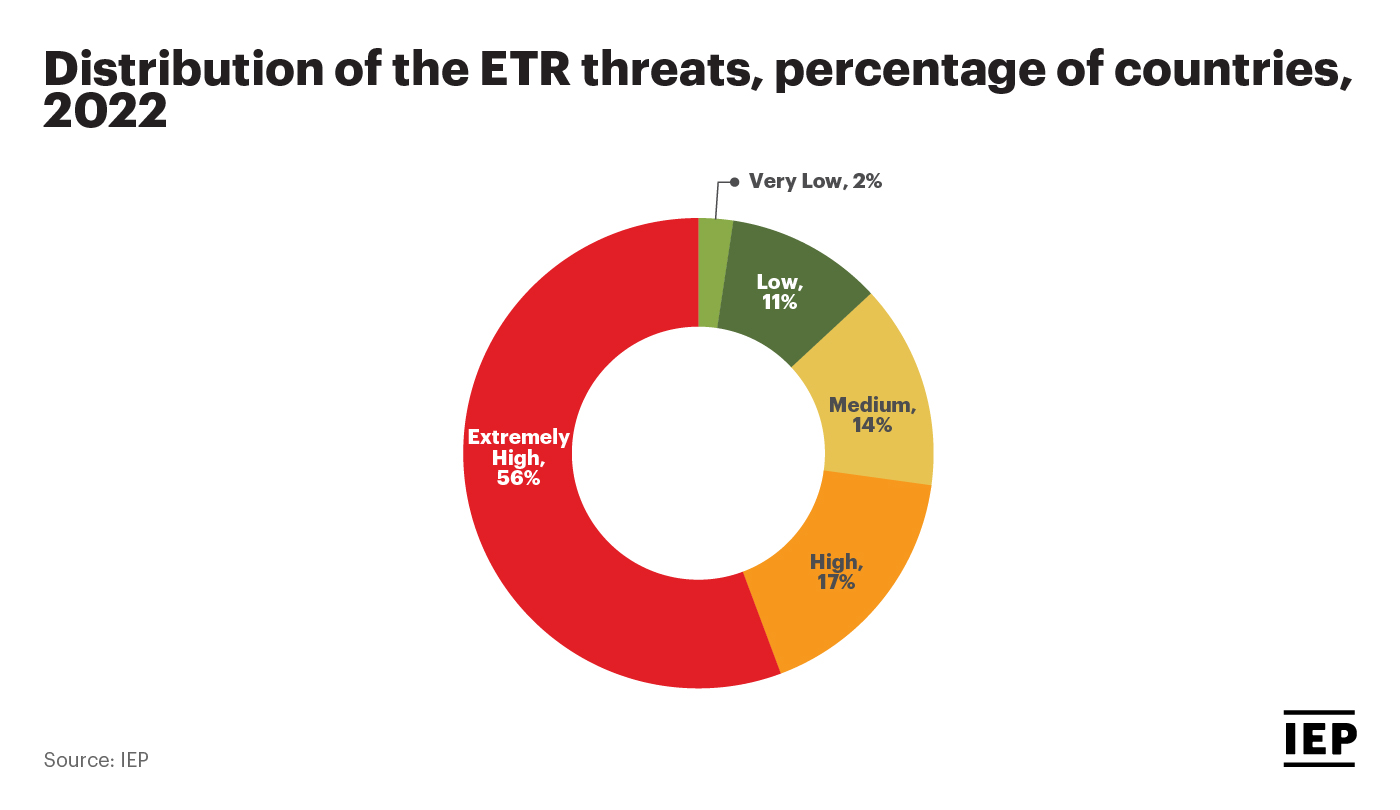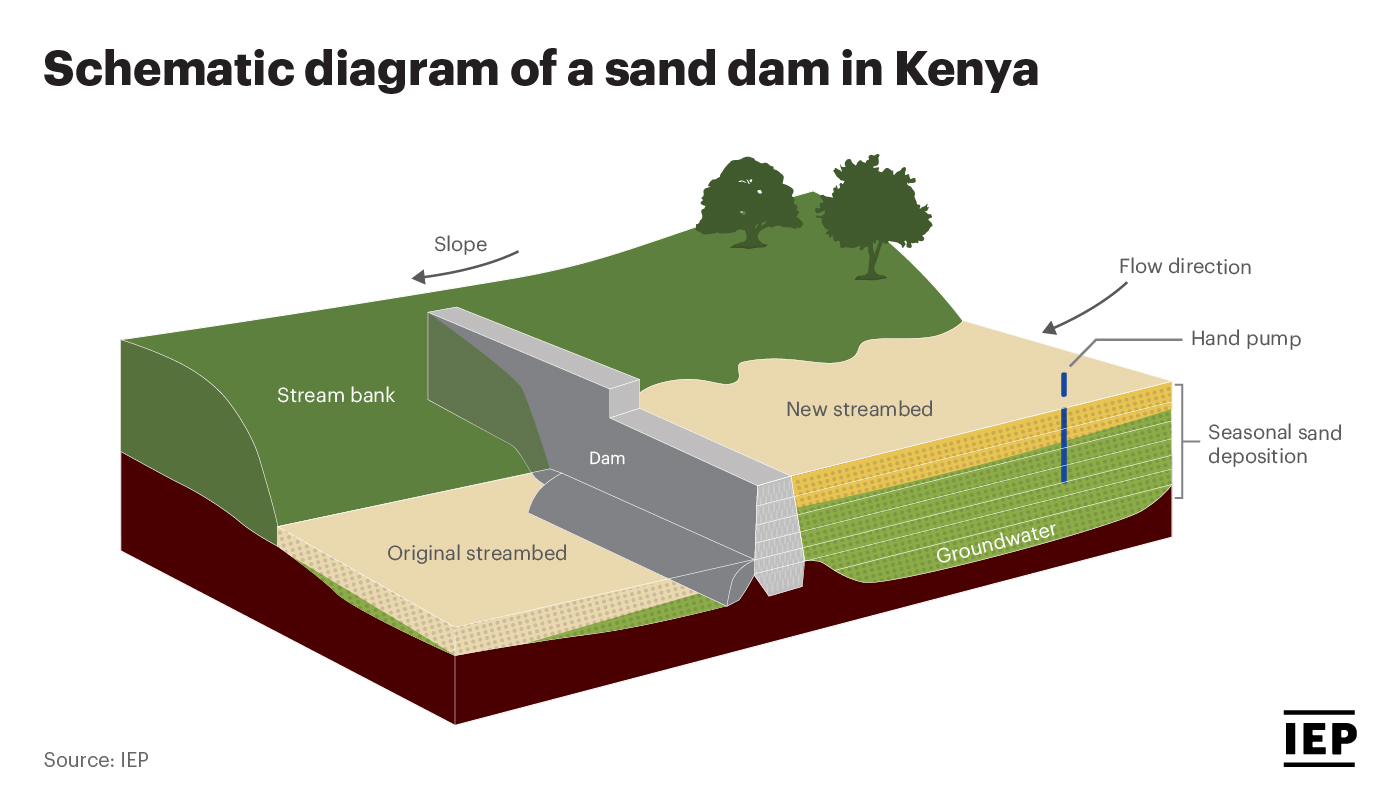In the third edition of the Ecological Threat Report (ETR) produced by the Institute for Economics and Peace (IEP), ecological threats in 228 independent states and territories are analysed. The report covers over 3,638 sub-national administrative units or 99.99% of the world’s population; assessing the four specific domains of threats relating to food risk, water risk, rapid population growth and natural disasters. This year’s report found that 56% of the countries referenced in the ETR are facing extremely high ecological threats.

The main finding from the 2022 ETR is that without concerted international action current levels of ecological degradation will substantially worsen, thereby intensifying a range of social ills including malnutrition, forced migration and illness. Current conflicts will escalate and multiply as a result, creating further global insecurity.
The 2022 ETR supports the 2021 ETR’s finding that countries with higher ecological threats are less peaceful. This year’s ETR reveals that 90% of the 20 least peaceful countries in the world face at least one catastrophic ecological threat, while 80% have low societal resilience. Ten of the 12 countries with the highest ecological threat rating in all four domains currently suffer from conflict deaths; while 11 of these countries have moderate-to-high ratings for intensity of internal conflict.
Highly resilient countries better manage their natural resources and their citizens’ socio-economic needs. Positive Peace is a proxy for socio-economic resilience and has been used to measure societal resilience throughout the report. Resilience includes effective water management, efficient agricultural systems, and better disaster preparedness. No single country with a high level of Positive Peace has an extremely low ETR score, underscoring the relationship between ecological fragility, conflict and societal resilience.
The report focuses on the links between interrelated challenges, that both sustain and feed off each other. Systemic effects compound, ensnaring countries in conflict traps that are difficult to escape. This nexus in the report highlights the significant impact of high population growth, ecological collapse, weak societal resilience and their relationship to conflict.
With a view that these issues must be addressed systemically, the report looks at innovative programs around the world that tackle a variety of ecological challenges. Using some of these programs as blueprints can lessen the impact of ecological threats, by building community resilience.
Download the 2022 Ecological Threat Report.
The ETR’s policy recommendations provide insight into the importance of building resilience, empowering local communities, and providing appropriate funding. Providing common themes to keep in mind when considering policy recommendations, this section is devoted to exploring successful programs that have been designed to build resilience.
Resilience-building is holistic, involving all aspects of a societal system. Part of this approach is recognising the multi-layered links between ecological change, sustainable development, human security and global action. Faced with such complexity, international agencies need to develop a common understanding of the meaning of resilience.
As institutional funding decreases, it is clear that private sources need to be leveraged to reduce reliance on taxpayer resources. The sum of all national governments’ income is 15% of the world’s GDP. Only a relatively small proportion of government income is currently directed toward ecological adaptation and development. Therefore, these issues must be faced by not only governments and NGOs, but also support from the private sector.
A key overarching implication of these discussions is the need to empower local communities to address the contextual challenges they face. Community-led approaches to development and human security lead to better program design, easier implementation and more accurate evaluation.
Initiatives that are led by locals usually benefit from more accurate local knowledge, and deeper awareness of local sensitivities and usually enjoy greater community buy-in. Thus, such initiatives tend to run more smoothly and at lower research and implementation costs than others. They also avoid the “one size fits all” approach of top-down interventions. Designed effectively, these bottom-up approaches can work in tandem with programs initiated at a higher level by governments and multilateral organisations.
The programs highlighted in the 2022 ETR can be briefly summarised into three categories: fostering water resilience, resilient food systems, and rural development.

In summary, ecological threats will continue to create humanitarian emergencies, increase conflict and result in forced migration, unless there is a sustained effort to reverse the current trend. Ecological threats are becoming more pronounced and affect more people than ever before. Building resilience to these threats will become increasingly important, and requires substantial investment both now and into the future.